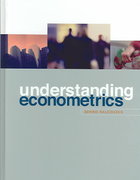solve them ,thank you
Table 1| Quarterly real GDP (billions of dollars) m Real GDP (billions of dollars) _m (a) Describe the pattern of the real GDP from periods 3 to 5 and also from periods 8 to 9. Explain in your answer whether there is a recession or not for each period. (3 marks) (b) Using real world examples, discuss costpush ination and its likely impact on the price level and GDP. (4 marks) (c) Do you agree that one goal of macroeconomics should be to reduce the measured unemployment rate to zero? Why or why not? (3 marks). (a) For the following: i. What do you call a macroeconomic indicator that typically begins to change its direction of growth before an economy enters a new business cycle phase? (1 mark) ii. What do you call the indicator that typically switches into a new phase at around the same time as the business cycle switches into a new phase? (1 mark) iii. List two indicators for each ofthe two categories of indicators you answered in (i) and (ii) above. (2 marks) (b) If actual real GDP moves from being equal to potential GDP to being less than potential real GDP, does the GDP gap become positive or negative? Discuss the impact on unemployment from such a movement. (2 marks) (c) List 2 or 3 macroeconomic goals and discussion the implications of achieving them (4 marks) (a) Considering the criteria of being a medium of exchange, a unit of account and a store of value, which one/s of the following items potentially serve as money? (2 marks) i. A MasterCard ii. A Peercoin iii. Salt iv. Coffee cups (b) List one assumption ofthe quantity theory of money. Based on the simple quantity theory of money, what would be the impact on the economy of increasing the money supply by 5%? (2 marks) (c) Briefly outline Keynes' view of money and compare it with that ofthe quantity theory of money (or Monetarists' view). (6 marks) (a) Based on the AD-AS framework, trace out the likely effects of a decision by the RBA to buy Commonwealth government securities from the public (participants in the nancial market). (8 marks) (b) Assume that a country's nominal GDP was measured at $1500 billion in a year and the volume of money (i.e. M1) circulating in the economy the same year was $400 billion. Using the equation of exchange, determine the velocity of money during the year. (2 marks)










